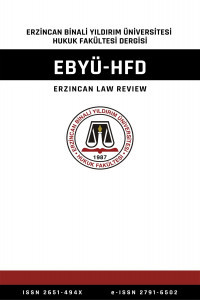PRINCIPLE OF DISTINCTION BETWEEN CIVILIANS AND COMBATANTS IN INTERNATIONAL HUMANITARIAN LAW AND ITS APPLICATION IN THE RECENT IRAQI CONFLICT
Red Cross, Geneva Convention, Legitimate Target, War Ad Bellum,
___
- Pictet, Jean; Development and Principles of International Humanitarian Law, Martinus Nijhoff Publishers, 1985, p.23.
- Rousseau, Jan Jacques, Le Contrat Social ou Principes du Droit Politique, Librairie Garnier Fréres, p.240.
- Rowe, Peter; Prisoners of War in Gulf Arca, in The Gulf War 1990-91 in International and English Law, Routledge, p. 194
- Sassoli, Marco/Bouvier, Antoine; How Does Law Protect in War?, International Committee of the Red Cross, 1999, p.68.
- ISSN: 2651-494X
- Yayın Aralığı: 1
- Başlangıç: 2002
- Yayıncı: Erzincan Üniversitesi Hukuk Fakültesi Dekanlığı
MÜTESELSİL KEFALET VE MÜTESELSİL BORÇLULUK KAVRAMLARININ KARŞILAŞTIRILMASI
İNTİFA HAKKI KONUSU TAŞINMAZDAN ELDE EDİLEN DOĞAL ÜRÜNLER
SON YASAL DEĞİŞİKLİKLER ÇERÇEVESİNDE KARŞILIKSIZ ÇEK KEŞİDE ETME SUÇU ÜZERİNE BİR İNCELEME
ROMA HUKUKU’NDA BOŞANMA (DIVORTIUM)
BİR KORUMA TEDBİRİ OLARAK YURTDIŞINA ÇIKARMAMA
DEMOKRASİYİ İDEAL ANLAMINA YAKLAŞTIRMA ÇABASI OLARAK RADİKAL DEMOKRASİ
